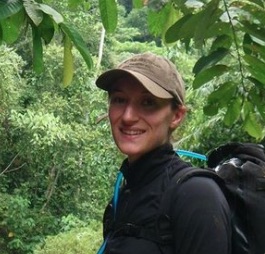Groups
Looking for a place to discuss camera trap troubleshooting, compare models, collaborate with members working with other technologies like machine learning and bioacoustics, or share and exchange data from your camera trap research? Get involved in our Camera Traps group! All are welcome whether you are new to camera trapping, have expertise from the field to share, or are curious about how your skill sets can help those working with camera traps.
Read in detail about how to use The Inventory, our new living directory of conservation technology tools, organisations, and R&D projects.
Over the last few years the conservation movement has been enthusiastically deploying new technologies that make it possible to observe and protect the natural world in ways once unimaginable. But are there any potential risks we need to consider as we deploy the new, exciting technologies?
Listen in on our interview with human-predator conflict expert, Gabi Fleury and gain a deeper understanding of the importance of holistic, ethical and community-led approaches to developing tech solutions for conservation.
Human-wildlife conflict is a significant challenge that only grows as habitats shrink and other issues like climate change alter the natural world. Technologies like biologging gear have become essential for proactively addressing human-wildlife conflict before it escalates, and tech projects that seek to understand population ranges and behaviour can help people learn to live with wildlife as part of our own environments. If you're interested in using technology to prevent human-wildlife conflict, this group is the place for you!
Read in detail about how to use The Inventory, our new living directory of conservation technology tools, organisations, and R&D projects.
Footprints are everywhere, and are perhaps the most overlooked source of data on the planet. WildTrack's Footprint Identification Technique (FIT) can identify species, individuals, sex and age-class to a high level of accuracy from simple images of footprints taken to a standardized protocol. This technique has the benefit of being non-invasive, cost-effective and draws on the strengths of community-skills such as tracking and observation. Our WildTrackFIT community is composed of users in >20 countries and we have FIT species algorithms developed for a range of species from big cats to Pachyderms, bears, mustelids, and even small mammals.If you see footprints as part of your fieldwork, or in another capacity, we'd love to hear from you!
Collections
Keep track of the resources that matter to you! Collections let you save, organise, and share content from all over the WILDLABS community. Create your first collection by clicking on the bookmark icon wherever you see it.
Amy Fitzmaurice's Content
Fellowship Reviews
Active Applications
All Assigned Applications
Fellowship Applications
As a fellowship administrator, you can manage applications.
Match by country
Match by Technology
Match by Ecosystem
A contact on the following Inventory items






























Amy Fitzmaurice's Comments
Be part of the conversation! Once you've joined a discussion in the community, your comments will show up here.